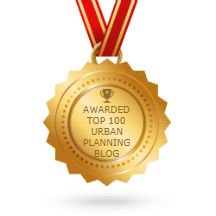People aren't "hanging out" as much outdoors during the workday in the center city
The Financial Times, "Is it the end for hanging out?," reminds me that I meant to write about this when it was first reported, in "What happened to hanging out on the street?" in Bloomberg. Researchers replicated the studies of William H. Whyte ("‘American Urbanist’ Review: Standing Out of the Crowd With William H. Whyte," Wall Street Journal), which formed the basis of the book, The Social Life of Urban Spaces, and the larger version, The City, which is a classic in urban design.
From the article:
Are city streets places for pedestrians to hang out, or are they routes to be traversed as quickly as possible? Americans are increasingly treating them as the latter rather than the former.
That is the striking implication of a recent interdisciplinary study published by the National Bureau of Economic Research. Applying modern artificial intelligence techniques to old video footage, the researchers compared pedestrian activity in 1980 and 2010 across prominent locations in Boston, New York City and Philadelphia. Their unsettling conclusion: American ambulators walked faster and schmoozed less than they used to. They seemed to be having fewer of the informal encounters that undergird civil society and strengthen urban economies.
... The researchers found a consistent evolution across all four locations. At each site, pedestrians walked faster in 2010 than they had in 1980, by an average of 15%. Time spent lingering in public spaces declined by roughly half, and fewer people were forming groups. In general, walkers appeared more atomized and rushed in 2010 than they had a generation before.
I e-talked with Anne Lusk about this, she is a researcher at Harvard School of Public Health, and wrote her dissertation on the community aspects of multi-use trails.
I think the authors of the study, deep in "machine learning" and such, miss the point. "Hanging out" is the dependent variable, while "flexibility with your time during the workday" is the independent variable.
People hang out less because they have more regimented work schedules, shorter lunch breaks, must be seen in the office, etc.
Furthermore, at least the suburban segment of workers, tends to be less familiar with their surroundings in the center city, mostly only between the garage if they drive or the transit station if they take transit, and their office destination.
Plus, as the FT article makes a point of more, while there has been an explosion of high quality public spaces downtown, there are lots of crappy ones still, making it less convivial to "hang out."
And yes, homelessness takeovers of park and other public spaces contributes negatively too.
=====
Also see:
-- "Extending the "Signature Streets" concept to "Signature Streets and Spaces," (2020, originally 2015)
-- "The layering effect: how the building blocks of an integrated public realm set the stage for community building and Silver Spring, Maryland as an example," (2012)
And the recent piece:
Labels: "streets as places", Downtowns/Central Business Districts (CBDs), plazas, urban design/placemaking
.jfif)





2 Comments:
too many homeless and its too hot
Reasonable take.
Post a Comment
<< Home